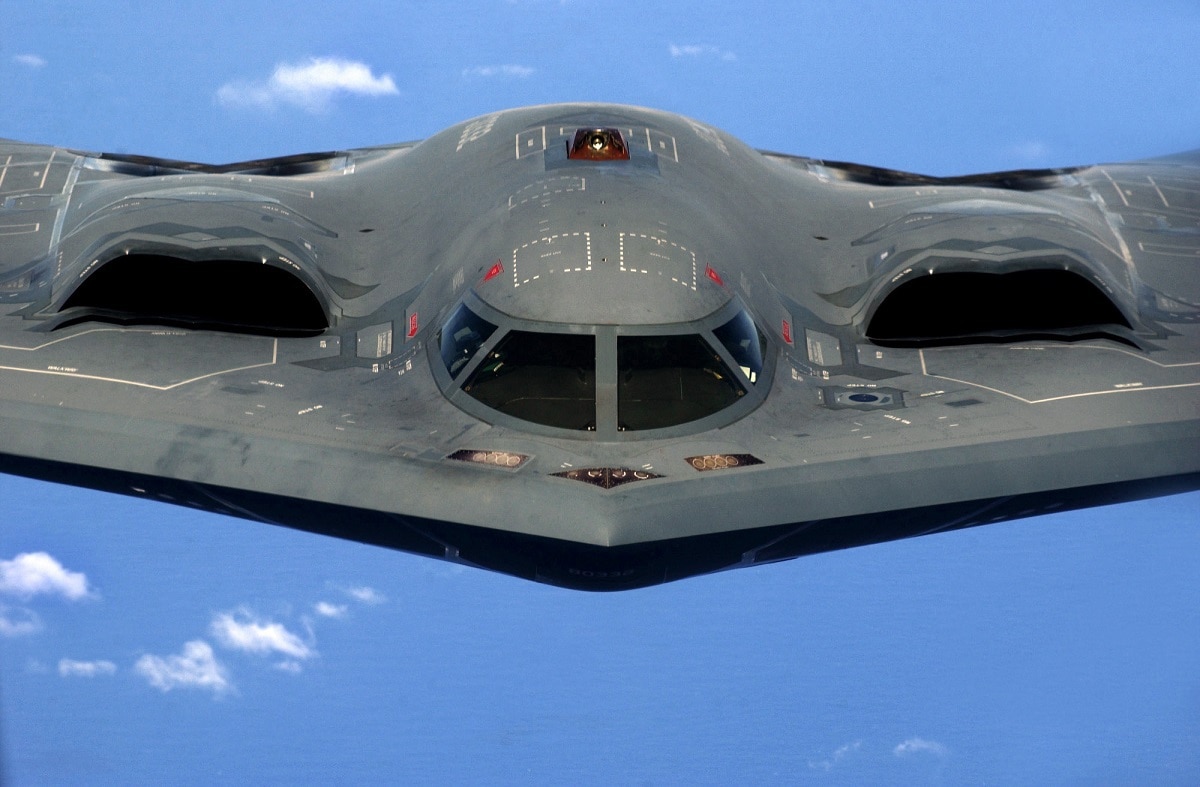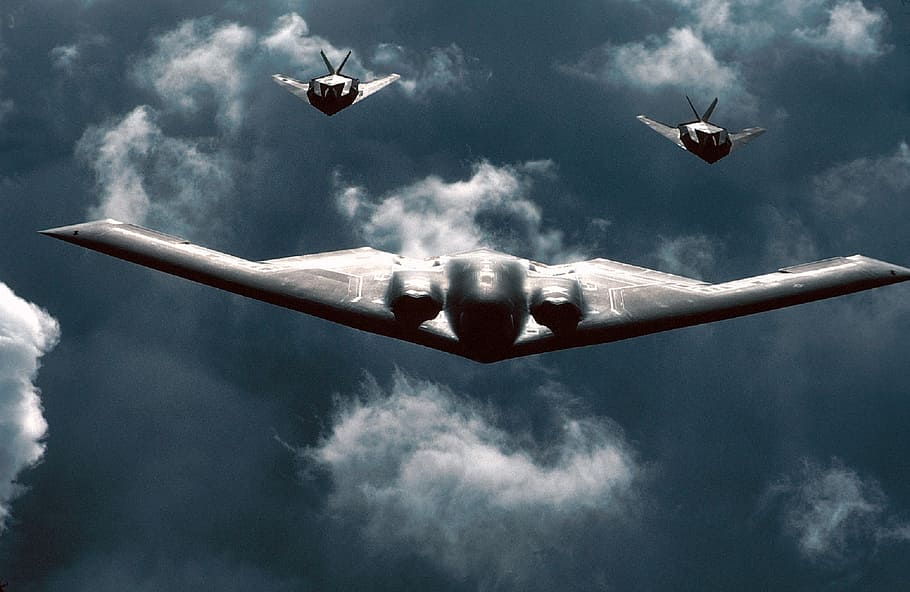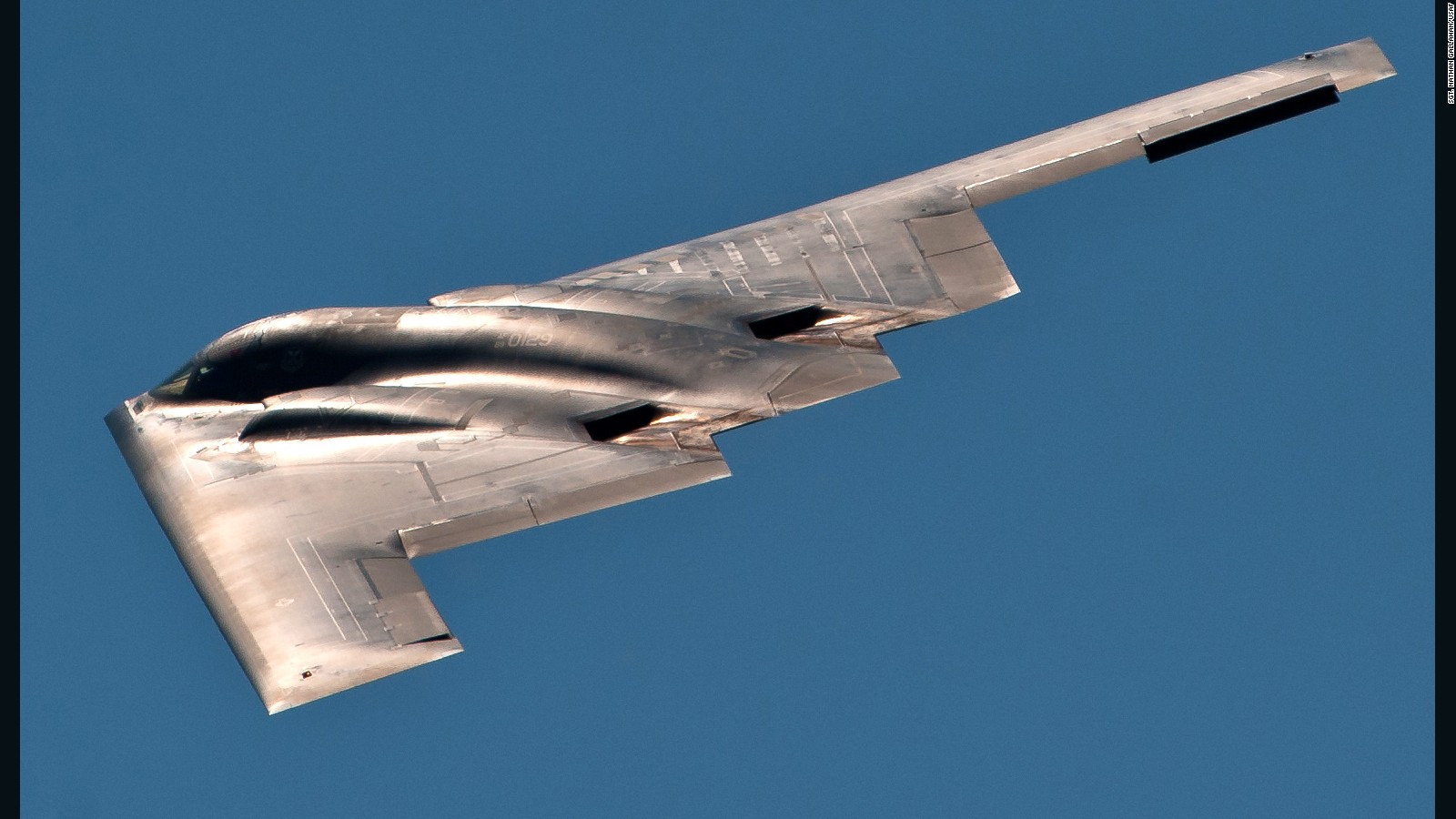
The Northrop Grumman B-2 Spirit is an American-made heavy strategic stealth bomber, designed to penetrate enemy heavy anti-aircraft defenses. The B-2 was designed during the Cold War. The bomber is operated by the crew of 2. The Bomber flies at subsonic speed, and has capability to deliver both conventional and thermonuclear weapons. Although the B-2 is a highly-capable and highly-advanced bomber. But it is very expensive, total procurement costs of the B-2 averaged $929 million per aircraft, which includes spare parts, equipment, retrofitting, and software support. The total project cost, which included development, engineering and testing, averaged $2.13 billion per aircraft in 1997. The USAF actually wanted a large fleet of the B-2s but its extremely expensive cost limited to total number of aircrafts to only 21. So why is the B-2 so expensive?
A warplane costs 2.13 billion US dollars? But why? The price of a Nimitz-class aircraft carrier is $4 billion, and two B-2 bombers are more expensive than a Nimitz-class aircraft carrier by $800 million.
If converted into gold, the B-2 bomber is three times more expensive than the same weight of gold.

So why is the B-2 bomber so expensive?
For two reasons, the first high-technology things which are integrated in this aircraft, which resulting in high R&D costs. Many of the aircraft technologies are very innovative.
Second, after the finished B-2 bomber came out, the U.S. military backtracked, and the original order of more than 100 bombers was not used, and 21 of them went. That’s good, the research and development costs can’t be spread out, so they can only be spread on these 21 aircrafts. Wouldn’t the final price be too high?
Besides, in order to maintain the necessary advantages of the B-2 bomber, the United States has no intention of exporting it. It can only be purchased by the US military itself. The sales scope is narrow. Simply put, it is a one-shot deal. So the high price is inevitable.
Unlike the F-35, although the research and development cost exceeds 200 billion US dollars, theUS military has planned to equip 2,456 F-35 aircrafts.
Therefore, although the F-35 is also a high-tech integrated aircraft, the price has been compressed to 135 million US dollars.
If the F-35 can only go the way of the B-2, only 21 can be built, and the price is several times more expensive than the B-2.
Then let’s talk about how expensive this B-2 bomber is.
Why did the Americans thought of building the B-2 bomber?
The reason is that in the 1970s, the United States and the Soviet Union were still in the Cold War period, and the Soviet Union began to develop various anti-aircraft missiles. The purpose was to establish an excellent air defense system to defend the homeland from enemy attacks.
In this context, the United States is a little unwilling, and it is a little anxious to see the Soviet Union build up layers of defense.
So at that time, the U.S. Air Force came up with an idea to create an aircraft with outstanding penetration capability, avoiding radar, and going deep into the opponent’s territory to drop bombs.
Then, under the promotion of the US Air Force, a project called the “Saber Penetrator” project was established, and stealth technology was also introduced into this project.

The reason why the United States introduced stealth technology into this project is entirely because the previous F-117 stealth fighter has stimulated the Americans.
And the undertaker of this project, a total of three companies, one is Lockheed, one is Boeing, and the last is Northrop.
This plan began to be determined in 1975, and it took five years to arrive, and it was not until 1980 that the plan was promulgated.
One hundred and thirty-two of these stealth bombers were expected to be produced at the time.
In fact, there should be two types of bombers developed by the U.S. military at that time, using a competitive model to see who is the final winner.
In the end, the B-2 stood out. In 1981, the U.S. military signed the initial contract and prepared to order six test aircraft and two static test aircraft.
This large order of 127 B-2s were planned to be delivered to the U.S. military at a rate of ten a year in the following period.
From here, the B-2 began the road of research and development.
On July 17, 1989, the prototype began its test flight and began to be delivered in 1991.
Soon, at this point in time, the Soviet Union disintegrated. The U.S. military was considered a dominant force, and it felt that there was no rival. Therefore, the large order of more than 100 B-2s was severely slashed by the U.S. military and became a order of twenty-one.
In fact, at that time, not only was the B-2 cut, but during this time period, many US military equipment, including re-developed equipment, were either cancelled or reduced.
It is said that on March 24, 1999, two B-2 bombers took off from Whiteman Air Force Base in Missouri, United States.
What are these two B-2 bombers going to do?
Very simple, their mission is to fly more than 1,000 kilometers, target the Yugoslavia, and finally drop the US military’s satellite-guided bombs at this place, and then return to the United States again.
The mission was fifteen hours long, and the B-2 didn’t carry enough fuel, so two more aerial refuelings were needed on the way.
Of course, the above will only make the pilot feel tired.
The most difficult point in the eyes of ordinary people is that the B-2 needs to test the stealth ability of the B-2 to break through the various anti-aircraft missiles placed on the ground by the Serbian army at that time.
As a result, the mission was completed very easily, and the Serbian army’s anti-aircraft missiles had no effect at all.
During the entire Kosovo War, the U.S. military also dispatched six B-2 bombers, and the number of sorties dispatched was not many, only forty-five times. You must know that in the battlefield war, the West, led by the U.S. military, dispatched as many as the aircraft sorties. More than 30,000 sorties.

This comparison number does not seem to be unusual, but compared with the war effect behind it, it is quite amazing.
The number of sorties dispatched by B-2 was less than 1% of all sorties, but more than 500 weapons were dropped, accounting for 1/10 of the total dropped bombs, and various military targets destroyed accounted for 3/10 of all targets.
At that time, in order to keep all the secrets of the B-2 secret, the Americans did not hesitate to let all the B-2 sorties take off from the mainland, and would not make any stops at their overseas bases at all.
One more piece of data to know how high the U.S. military has improved the confidentiality of the B-2. It is said that all the relevant B-2 research and development sites, production sites, personnel, confidential materials and other places have invested as much as 20 secrecy expenses, billion dollars, a record that was not there before.
Advantages of B-2
It is said that the biggest advantage of B-2 is actually stealth. This kind of stealth includes shape stealth, material stealth, structural stealth and engine stealth.
In fact, what many people often mention is the shape stealth and the material stealth.
What do these two types of stealth mean?
Simply put, through the special shape of the body and the special materials used to make the outer shell of the aircraft, as many radar waves as possible are absorbed, or the radar waves are deflected, thereby reducing the reflected waves of the aircraft itself.
In the end, the opponent’s radar can only see a weak reflection or even nothing when searching.
Therefore, the shape of the B-2 is very special, very smooth without too many corners and corners, and it looks like a big bat.
This is not to mention that the main beam and engine compartment of the B-2’s fuselage structure are also very particular. Titanium alloys are used. Except for this part, the rest of the parts are made of carbon brazing or graphite composite materials.
Why graphite and carbon brazing?
These materials are not only light, but also strong. There are many tiny holes in the body. After the radar waves are shot, they will be absorbed.
According to the general aircraft manufacturing process, various splicing places will be connected with rivets, but B-2 is not. In order to reduce the reflection, these parts that need to be spliced and all made of high-pressure die-casting.
In some cases, the color of the B-2 is black. In fact, at present, all stealth aircraft are darker and darker. The characteristics of this color help absorb radar waves.
Of course, the coating used by the B-2 must be a special invisible material, which can be invisible not only in black.
Many people will notice that the tail of the B-2 is zigzag, and this shape is also exquisite, which can achieve the effect of scattering the radar.
There is also a 33-degree wing swept back that many people talk about. This structure can make it difficult to reflect or refract radar waves emitted from the front or the upper and lower sides of the front.
Then the rear side has to be dealt with, and the front side has to keep up, so the leading edge of the B-2’s wing is designed with an irregular honeycomb cavity design.
This kind of honeycomb cavity design will make the radar wave come and go, and if you get in, you can’t get out.
Structural Stealth
First of all, there is still a lot of trouble in stealth. The air intake, like a human’s big nostrils, is not easy to defend against radar.
So the Americans simply set the intake port of the B-2 into an S-shape. This shape has the advantage that the incoming radar wave can be refracted multiple times in this S-shape, so the wave is a kind of energy. Refraction will cause a large amount of energy loss. After several more refractions, the radar wave will not be able to get out, and it will completely disappear inside.
In addition, the cockpit of the B-2 is arc-shaped. This shape has no edges and corners, so the radar waves are irradiated on it, and it is difficult to reflect back. Most of the radar waves will slide away along the outer edge of the cockpit.
Of course, the radar wave is also a pervasive thing. In order to prevent the radar wave from being reflected in the cockpit along the glass of the cockpit, the Americans mixed a certain amount of glass in the cockpit glass. The metal powder, the radar wave can’t enter through the glass.
The whole B-2 looks very smooth. There are bumps, that is, the two square things in front of the wings. This thing can’t be seen unless you look carefully.
What are these two things used for? Actually, they are the antennas of the B-2.
The last feature of structural stealth is that the second half of the B-2 seems to be two W sets together, which is also very particular. The principle is the same as the S-shape of the air intake. After the radar wave enters here , reflected back and forth in the second half of the two W shapes, so as to achieve the purpose of allowing the radar wave to enter without return.
Engine Stealth
The engine is the core of the aircraft, and it is also something that is not easy to hide. After all, the engine is on fire and the heat is rising.
So this needs to reduce the heat of the engine, so how does B-2 do it?
It uses something called an airflow mixer to guide cold air into the combustion chamber and pulley of the engine. Once the cold air enters, it can exchange heat with the exterior of the combustion chamber and pulley, thereby reducing the overall temperature.
Of course, the nozzle of the engine is also a position that is easily captured by radar waves, so the radar waves must also come and go.
So the Americans buried the nozzle of the engine deep inside the wing, and the nozzle was hidden inside, and the radar wave had to go in to capture it.
And there is an unexpected effect of doing so, that is, the infrared signal becomes very weak.
Then after such a process, the reflective surface of the B-2 displayed on the radar is only 0.1 square meters, which is not much larger than a bird flying high in the sky.
Of course, it doesn’t make sense to say that, there must be a horizontal comparison, such as the American B-25 long-range bomber. If this is captured by radar, its reflection cross section is as high as 100 square meters.
The difference between the two is a thousand times, so the B-2 achieves the effect of stealth as a whole.
In addition to the above advantages, the B-2 has another advantage, that is, it can fly 18,200 kilometers in one breath, and it can fly half the earth.
So does the B-2 have no drawbacks? Of course there is!
Disadvantages of B-2
The maintenance of the B-2 is quite a headache. According to the data, the B-2 needs to be maintained for hours after flying. If it is short, it will take 20 hours, and if it is long, it will reach 100 hours.
Then there is the supporting maintenance equipment and personnel is also quite amazing.
For example, the U.S. military has deployed two B-2s in Guam, and these two B-2s only need 170 tons of equipment to maintain, which is a terrifying number.
The personnel who use these equipment to maintain the B-2 are as high as 200 people.
Of course, these are nothing, the B-2 must also have a special hangar for it to use, and the ordinary hangar will make the B-2 scrapped.
Therefore, it is almost impossible to use B-2 in continuous waves.
Then there is the B-2 looks very good, but its ability to fight bad weather is poor, such as fog, cloud, rain, smoke, the B-2’s combat effectiveness will be limited.
Anyway, nothing is perfect.





